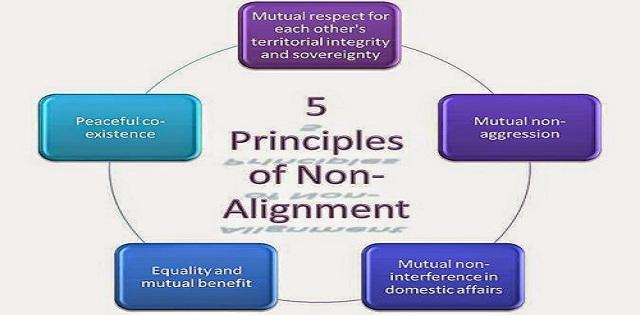During the Cold War period, which lasted roughly from the end of World War II in 1945 to the early 1990s, India pursued a policy of non-alignment. Non-alignment meant that India, along with several other countries, chose not to align itself with either of the two superpower blocs, namely the United States-led Western bloc (NATO) or the Soviet Union-led Eastern bloc (Warsaw Pact).
India’s policy of non-alignment was primarily shaped by its first Prime Minister, Jawaharlal Nehru. This policy had several key components:
- Maintaining Independence: Non-alignment allowed India to maintain its sovereignty and independence in foreign affairs. By not aligning with any superpower bloc, India aimed to assert its autonomy and pursue its national interests without being beholden to external powers.
- Promoting Global Peace and Cooperation: Non-alignment was based on the principles of peaceful coexistence, disarmament, and respect for sovereignty. India sought to play a role in mediating conflicts and promoting dialogue between the two superpowers and other countries.
- Fostering Third World Solidarity: India, along with other non-aligned nations, sought to promote solidarity among developing countries, often referred to as the Third World. This involved advocating for the rights of formerly colonized nations, supporting decolonization efforts, and addressing issues such as poverty, inequality, and underdevelopment.
- Advocating for Multilateralism: Non-alignment emphasized the importance of multilateral institutions such as the United Nations as forums for international cooperation and conflict resolution. India actively participated in various international forums to promote its agenda of peace, development, and global equity.
Benefits of India’s Policy of Non-Alignment:
- Flexibility: Non-alignment provided India with flexibility in its foreign policy choices. It allowed India to engage with both Western and Eastern bloc countries based on its interests rather than ideological alignment.
- Avoidance of Cold War Entanglements: By not aligning with either superpower bloc, India avoided being drawn into the ideological conflicts and military alliances of the Cold War. This helped prevent the risk of being dragged into proxy wars or conflicts between the superpowers.
- International Influence: India’s non-aligned stance enhanced its international standing and influence. As a leading voice of the non-aligned movement, India played a significant role in shaping global discourse on issues such as disarmament, development, and decolonization.
- Promotion of Peace and Stability: Non-alignment contributed to peace and stability by advocating for peaceful coexistence, dialogue, and conflict resolution. India’s diplomatic efforts helped defuse tensions and mitigate the risk of nuclear confrontation during critical periods of the Cold War.
Overall, India’s policy of non-alignment served its interests by safeguarding its independence, promoting global peace and cooperation, and enhancing its international influence during the tumultuous Cold War era.
The post What Policy was India following during Cold War period? Explain the benefits of the policy of non alignment. appeared first on Ias Banenge.

